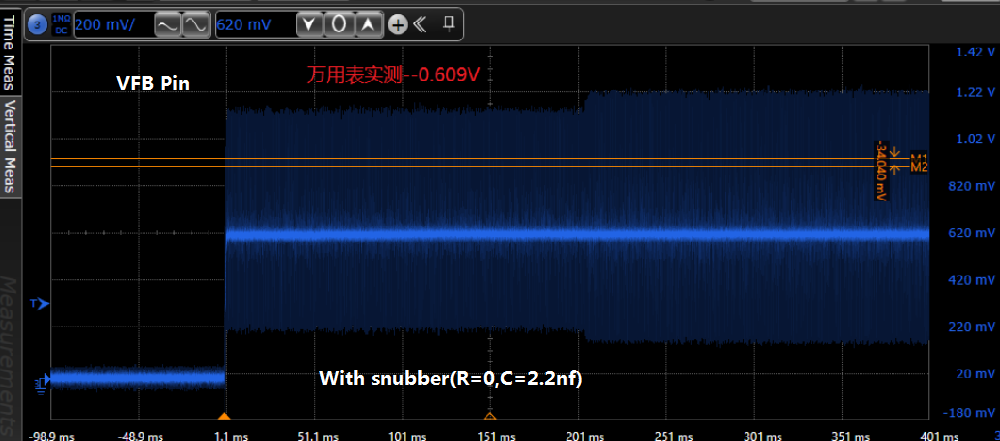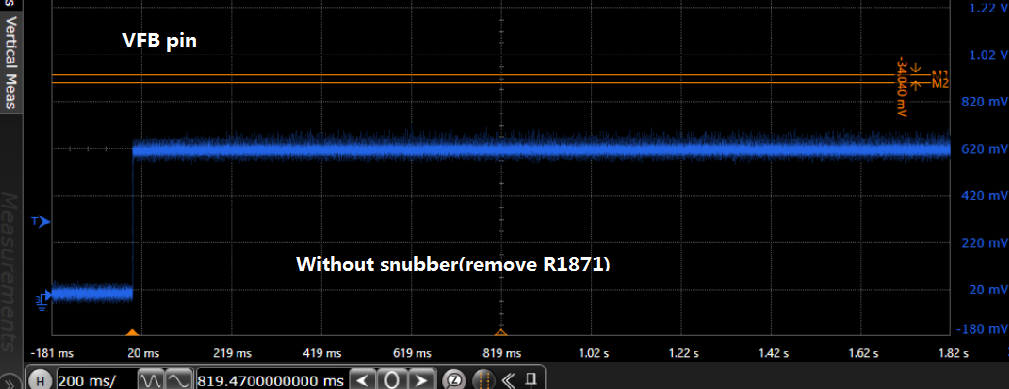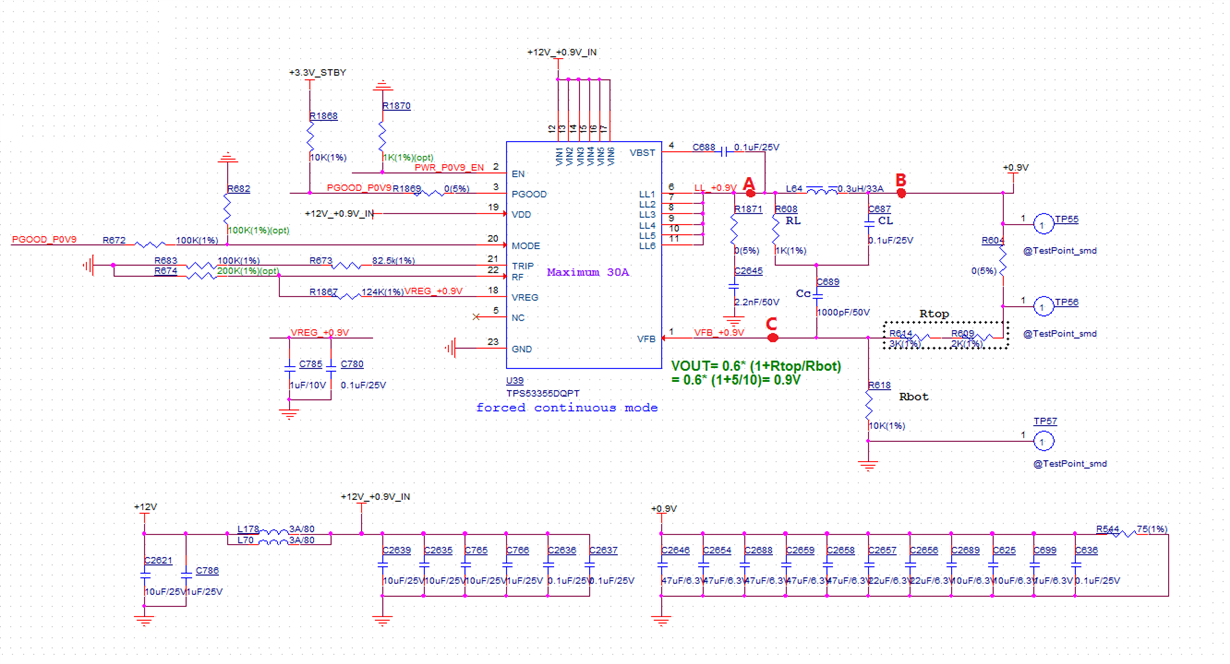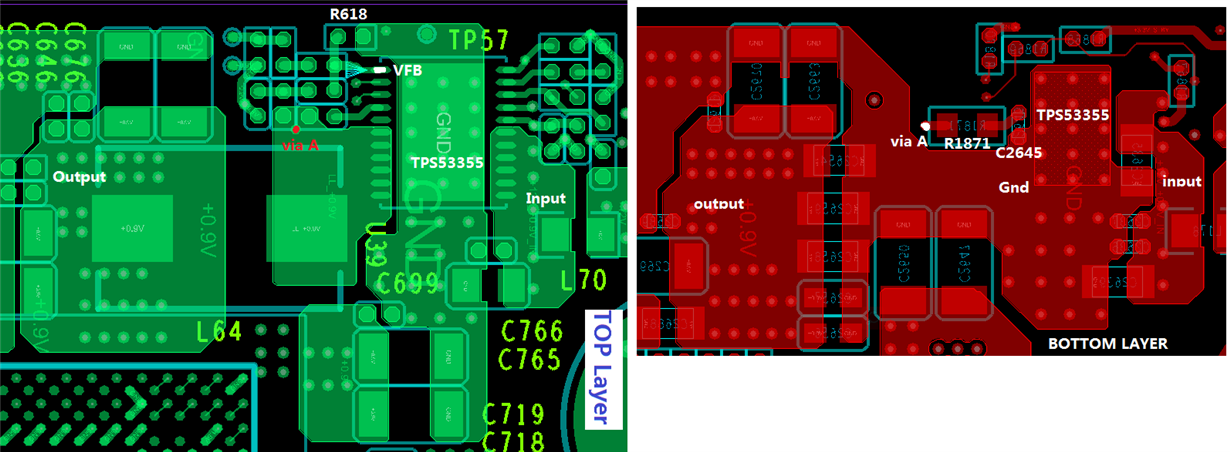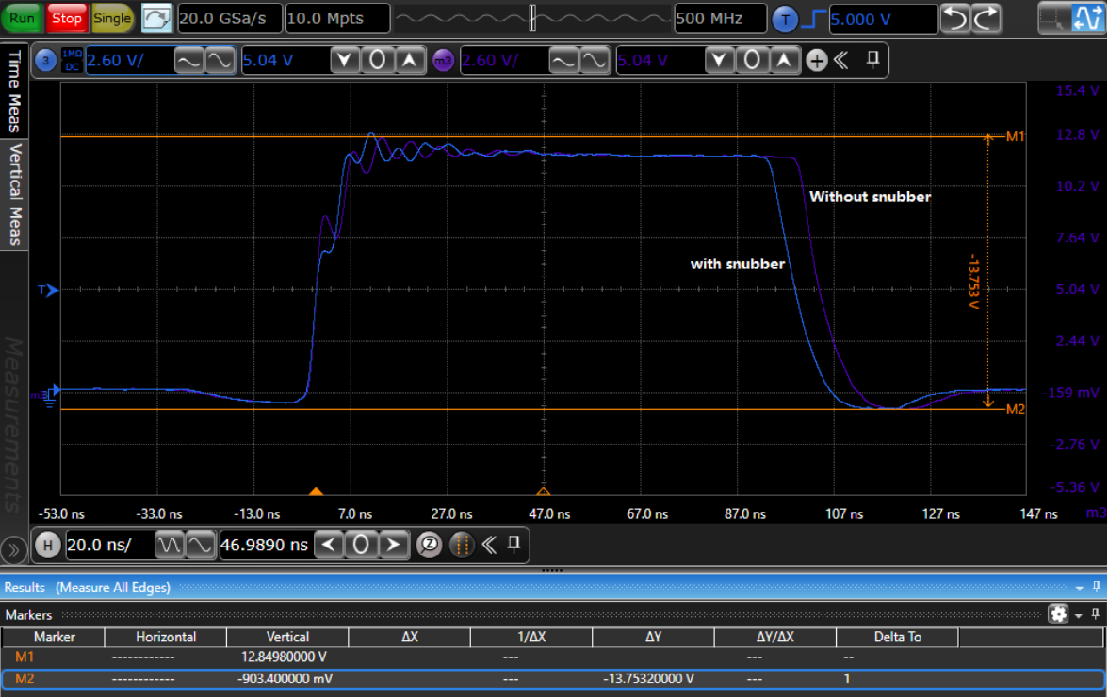TI guys
we meet a issue for TPS53355 design, refer to below pic for sch. the snubber circuit R1871=0,C2645=2.2nF.
we test the waveform on the VFB pin(Point C) with and without snubber(remove R1871) separately.
we find the snubber will affect the VFB waveform largely.
Is it normal ? and how the snubber affect VFB ?
TKs.


